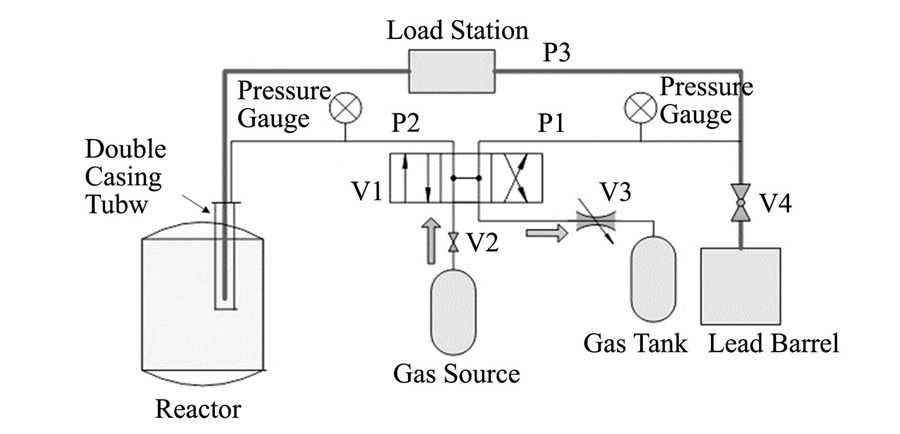The activation method is taken to measure the in-core distribution of neutron spectrum for the designed 10 MW solid-fuel thorium molten-salt reactor (TMSR-SF1). The neutron activation foil sample is loaded outside the reactor and quickly transported to the measurement position in the reactor through the transmission device for irradiation, and then is transferred outside of reactor to the energy spectrum samples for de-spectrographic analysis.
In order to realize the rapid entry and exit of the neutron activation foil sample into and out of the reactor, a pneumatic conveying system with double-layer casing is designed in this research.
The principle of the conveying system and the structure of the double-casing tube were adopted in this study. ANSYS Fluent software and 6DOF dynamic grid technology were used to analyze the movement and stress of the sample under different pipe gaps, so as to determine the sample pipe gap value. Then the flow parameters and gas-solid two-phase flow resistance of the conveying system were calculated in detail using the pneumatic conveying theory. Finally, a prototype was developed for experiments to verify the principle of the conveying system.
The analysis results showed that the sample speed is decreased with the increase of the pipe gap. The experiments results show that the velocity of the sample and the pressure loss of the gas-solid two-phase flow increase with the increase of the gas flow rate. Under the same flow rate, the experimental speed of the sample movement and the pressure loss of the gas-solid two-phase flow are in good agreement with the theoretical calculations.
The pneumatic convey system with double-casing tube can be applied to transport the sample into and out of the reactor, and the theoretical calculations values of pneumatic conveying parameters in this study are reliable.




